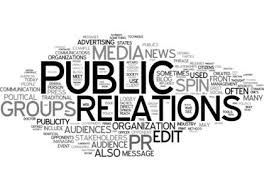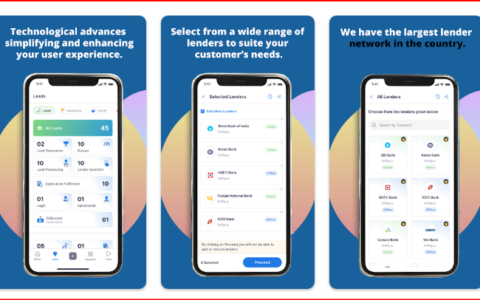
Public Relations (PR) is a dynamic and multifaceted industry that plays a crucial role in shaping and managing the public image of organizations. From crisis communication to brand building, PR professionals are instrumental in creating and maintaining a positive relationship between an organization and its various stakeholders. Understanding the structure of the
PR industry is essential for both professionals entering the field and businesses seeking to leverage effective communication strategies. This comprehensive exploration delves into the various facets of the PR industry, examining its organizational structure, key players, and the evolving trends that shape its landscape.
1. Foundations of the PR Industry
1.1 Historical Evolution
The roots of the PR industry can be traced back to the early 20th century when Edward Bernays, often regarded as the father of modern public relations, applied psychological principles to shape public opinion. Over the decades, the industry has evolved from a focus on publicity to a strategic communication discipline.
1.2 Core Principles
At its core, the PR industry revolves around building and maintaining mutually beneficial relationships between organizations and their audiences. Integrity, transparency, and effective communication are fundamental principles that guide PR professionals in their daily activities.
2. Organizational Structure
2.1 PR Agencies
PR agencies are a cornerstone of the industry, providing specialized services to a diverse range of clients. These agencies vary in size, ranging from boutique firms to global giants, and cater to specific industries such as technology, healthcare, and entertainment.
2.2 In-House PR Departments
Many large corporations, government agencies, and non-profit organizations have in-house PR departments. These internal teams focus exclusively on managing the communication needs of their respective organizations, offering a more dedicated and nuanced approach to PR.
2.3 Freelancers and Consultants
Beyond agencies and in-house teams, the PR industry also includes a significant number of freelancers and consultants. These individuals often bring a wealth of experience and expertise to specific projects, offering flexibility to organizations seeking targeted PR solutions.
3. Key Players in the PR Ecosystem
3.1 PR Professionals
Skilled PR professionals form the backbone of the industry. From media relations specialists to crisis communication experts, PR practitioners employ diverse skills to navigate the ever-changing landscape of public perception.
3.2 Media Outlets
Media outlets, including traditional newspapers, television, radio, and digital platforms, are crucial partners in disseminating information. Building relationships with journalists and influencers is a key aspect of PR professionals’ roles.
3.3 Stakeholders
Stakeholders, encompassing employees, customers, investors, and the broader community, are vital components of the PR ecosystem. Understanding and engaging with these diverse groups are essential for crafting effective communication strategies.
4. Trends Shaping the PR Industry
4.1 Digital Transformation
The PR industry is undergoing a digital transformation, with social media, online platforms, and digital analytics becoming integral tools. PR professionals must adapt to the evolving digital landscape to effectively reach and engage target audiences.
4.2 Data-Driven Decision Making
The use of data analytics is increasingly prevalent in PR. Analyzing metrics, sentiment analysis, and monitoring online conversations provide valuable insights, enabling PR professionals to make informed decisions and measure the impact of their campaigns.
4.3 Integration of Marketing and PR
The lines between marketing and PR are blurring, as organizations recognize the importance of a cohesive approach to communication. Integrated marketing communication strategies that seamlessly blend PR efforts with marketing initiatives are gaining prominence.
5. Challenges and Opportunities
5.1 Reputation Management
Maintaining a positive reputation is a perpetual challenge for PR professionals. The rise of social media has intensified the speed at which information spreads, making reputation management a real-time and complex endeavor.
5.2 Diversity and Inclusion
The PR industry is striving to address issues of diversity and inclusion. Recognizing the importance of diverse perspectives in shaping narratives, organizations are working towards creating more inclusive environments within the industry.
5.3 Globalization
As businesses expand globally, PR professionals face the challenge of navigating cultural nuances and diverse communication landscapes. Effective cross-cultural communication is essential for building trust and credibility on a global scale.
6. Educational and Professional Development
6.1 Academic Programs
Numerous universities and institutions offer specialized PR programs, providing aspiring professionals with a foundation in theory and practical skills. These programs cover areas such as media relations, crisis communication, and strategic planning.
6.2 Professional Associations
PR professionals often join industry-specific associations, such as the Public Relations Society of America (PRSA) or the Chartered Institute of Public Relations (CIPR). These associations offer networking opportunities, professional development resources, and ethical guidelines for practitioners.
7. Ethical Considerations in PR
7.1 Transparency and Authenticity
Maintaining ethical standards is paramount in the PR industry. Transparency and authenticity are key principles that PR professionals must uphold to build trust with their audiences.
7.2 Balancing Client Interests and Public Interest
PR professionals often face the challenge of balancing the interests of their clients with the broader public interest. Navigating this delicate balance requires ethical decision-making and a commitment to serving the greater good.
8. The Future of the PR Industry
8.1 Evolving Role of AI
Artificial Intelligence (AI) is poised to play a significant role in the future of PR. Automated tools for media monitoring, sentiment analysis, and chatbots are becoming more sophisticated, augmenting the capabilities of PR professionals.
8.2 Continued Embrace of Digital Platforms
The dominance of digital platforms is likely to persist, with PR professionals leveraging social media, podcasts, and other online channels to reach target audiences. The ability to adapt to emerging technologies will be crucial for success in the evolving landscape.
8.3 Increased Emphasis on Corporate Social Responsibility (CSR)
As societal expectations evolve, there is a growing emphasis on Corporate Social Responsibility (CSR). PR professionals will play a pivotal role in communicating organizations’ commitment to social and environmental sustainability.
9. Conclusion
In conclusion, the structure of the PR industry is intricate and constantly evolving. From the historical foundations to the current trends shaping its trajectory, the PR industry remains a dynamic field where adaptability, strategic thinking, and ethical considerations are paramount. As the industry continues to respond to technological advancements and societal shifts, PR professionals must stay abreast of emerging trends and embrace innovation to effectively navigate the ever-changing landscape. The key to success lies in a holistic understanding of the industry’s structure, coupled with a commitment to fostering positive relationships and maintaining the highest ethical standards.
click
here to visit website
 Public Relations (PR) is a dynamic and multifaceted industry that plays a crucial role in shaping and managing the public image of organizations. From crisis communication to brand building, PR professionals are instrumental in creating and maintaining a positive relationship between an organization and its various stakeholders. Understanding the structure of the PR industry is essential for both professionals entering the field and businesses seeking to leverage effective communication strategies. This comprehensive exploration delves into the various facets of the PR industry, examining its organizational structure, key players, and the evolving trends that shape its landscape.
Public Relations (PR) is a dynamic and multifaceted industry that plays a crucial role in shaping and managing the public image of organizations. From crisis communication to brand building, PR professionals are instrumental in creating and maintaining a positive relationship between an organization and its various stakeholders. Understanding the structure of the PR industry is essential for both professionals entering the field and businesses seeking to leverage effective communication strategies. This comprehensive exploration delves into the various facets of the PR industry, examining its organizational structure, key players, and the evolving trends that shape its landscape.
 Public Relations (PR) is a dynamic and multifaceted industry that plays a crucial role in shaping and managing the public image of organizations. From crisis communication to brand building, PR professionals are instrumental in creating and maintaining a positive relationship between an organization and its various stakeholders. Understanding the structure of the PR industry is essential for both professionals entering the field and businesses seeking to leverage effective communication strategies. This comprehensive exploration delves into the various facets of the PR industry, examining its organizational structure, key players, and the evolving trends that shape its landscape.
Public Relations (PR) is a dynamic and multifaceted industry that plays a crucial role in shaping and managing the public image of organizations. From crisis communication to brand building, PR professionals are instrumental in creating and maintaining a positive relationship between an organization and its various stakeholders. Understanding the structure of the PR industry is essential for both professionals entering the field and businesses seeking to leverage effective communication strategies. This comprehensive exploration delves into the various facets of the PR industry, examining its organizational structure, key players, and the evolving trends that shape its landscape.



